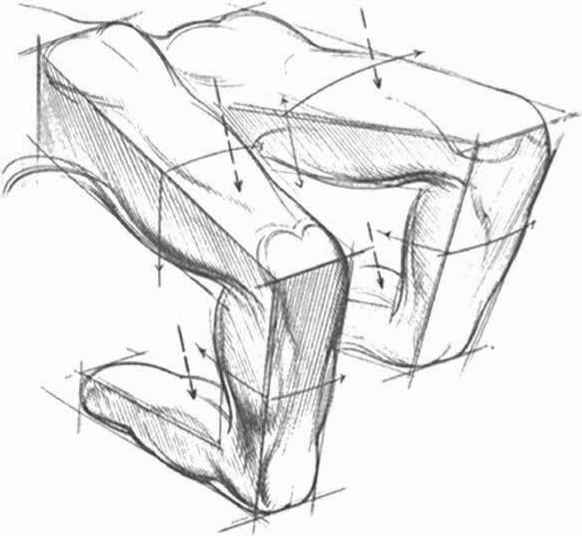
foreshorten [fawr-shawr-tn, fohr-] ExamplesWord Origin verb (used with object)
- Fine Arts. to reduce or distort (parts of a represented object that are not parallel to the picture plane) in order to convey the illusion of three-dimensional space as perceived by the human eye: often done according to the rules of perspective.
- to abridge, reduce, or contract; make shorter.
Origin of foreshorten First recorded in 1600–10; fore- + shorten Related formsun·fore·short·ened, adjective Examples from the Web for foreshorten Historical Examples of foreshorten
The mountains dwarf mankind and foreshorten the procession of its long generations.
The Autocrat of the Breakfast-Table
Oliver Wendell Holmes
You foreshorten as though you never used the model, and you’ve caught Kami’s pasty way of dealing with flesh in shadow.
The Works of Rudyard Kipling: One Volume Edition
Rudyard Kipling
After all, foreshortening is only good drawing, and a good draughtsman will foreshorten well, while a bad draughtsman will not.
Daniel Burleigh Parkhurst
The laws of perspective interfere and alter the apparent directions, and foreshorten the dimensions of its several parts.
The Catholic World; Vol. IV.; October, 1866, to March, 1867.
E. Rameur
Of course he could, if he had cared to do so; for if you can foreshorten a limb or a hand, much more a tree branch.
Modern Painters, Volume V (of 5)
John Ruskin
British Dictionary definitions for foreshorten foreshorten verb (tr)
- to represent (a line, form, object, etc) as shorter than actual length in order to give an illusion of recession or projection, in accordance with the laws of linear perspective
- to make shorter or more condensed; reduce or abridge
Word Origin and History for foreshorten v.
c.1600, from fore- + shorten. Related: Foreshortened; foreshortening.
 Liberal Dictionary English Dictionary
Liberal Dictionary English Dictionary